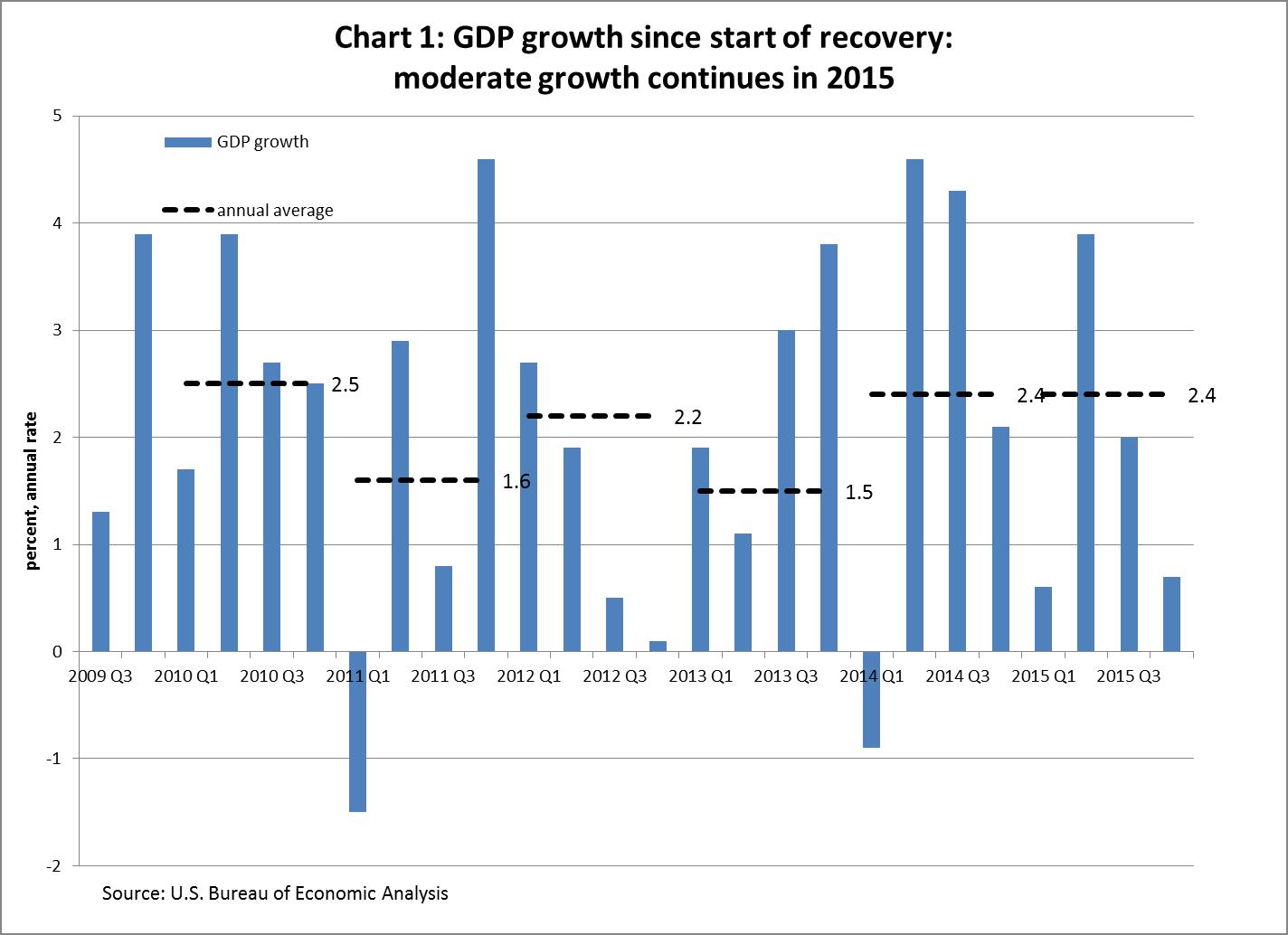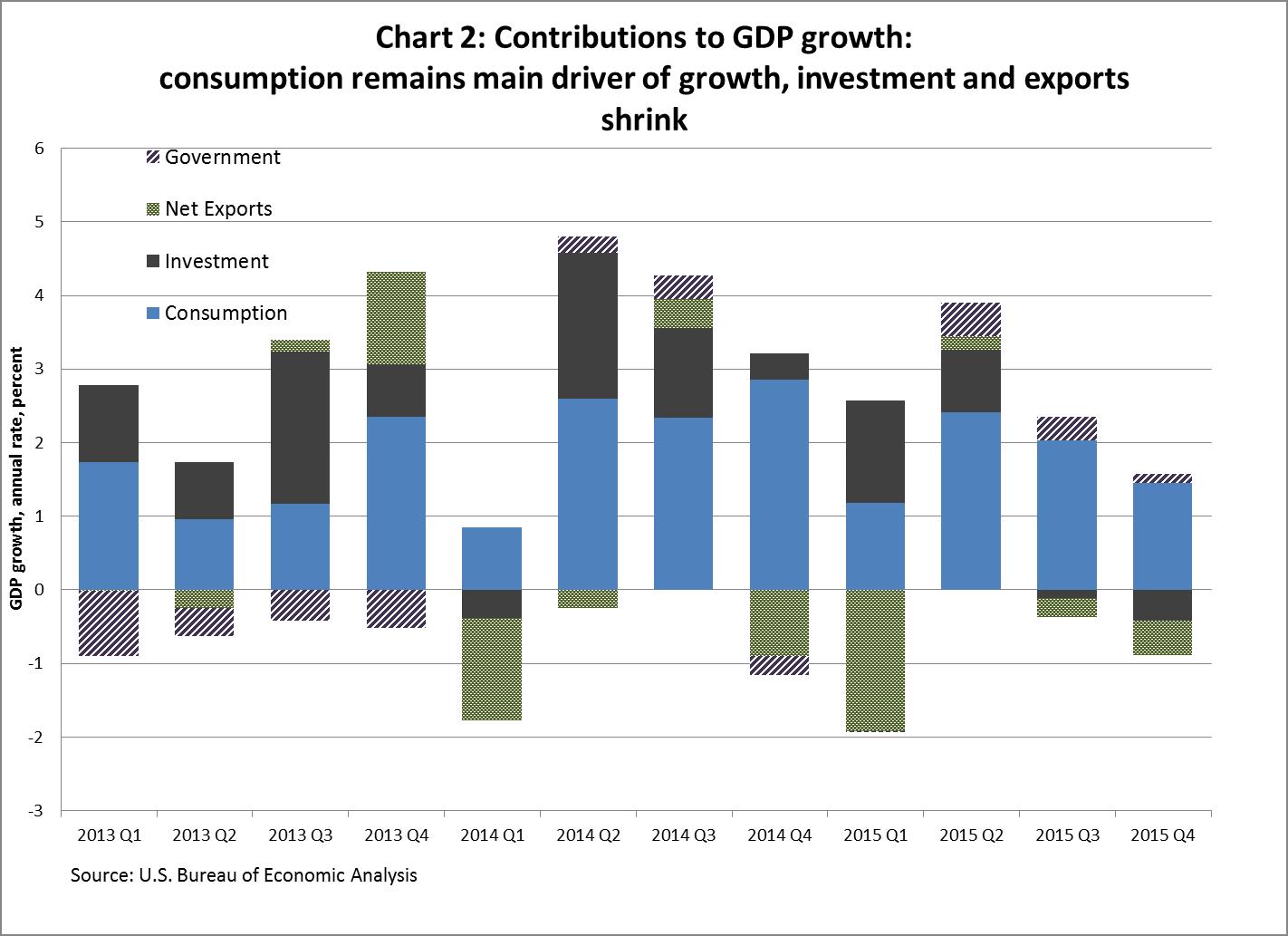Economic Growth Continues, But At a Slower Pace
Six and a half years into the business-cycle expansion, economic growth continues, albeit at a slower pace. The growth is mainly driven by personal consumption expenditures, with some weakness coming from business investment and exports.
U.S. gross domestic product, the broadest measure of economic activity, expanded 0.7 percent (annual rate) in the fourth quarter of 2015 and 2.4 percent in all of 2015, according to the latest report released by the Bureau of Economic Analysis this morning.
The fourth-quarter numbers represent a slowdown in economic growth compared to earlier in the year (see chart 1). These numbers may yet be revised when more complete data become available in the coming months. The annual growth in 2015, at 2.4 percent, is slightly above the average pace of growth in this economic expansion, which averaged 2.1 percent per year since 2009.
Economic growth in 2015, and in the fourth quarter, was driven mainly by personal consumption expenditures, which have accounted for over four-fifths of GDP growth in this expansion (see chart 2). This is a fairly typical pattern – consumption is usually the main driver of economic growth.
The recent slowdown in growth comes mostly from the slower growth in business investment and a decrease in exports. Business fixed investment, which includes expenditures on things like business equipment and nonresidential structures, shrunk 1.8 percent (annual rate) in the fourth quarter of 2015, in contrast to growth in excess of 2 percent earlier in the year. Exports shrunk by 2.5 percent (annual rate) in the fourth quarter, in contrast to mild growth earlier in the year.
A distinguishing pattern of this economic recovery has been a particularly weak contribution from the government sector. Government spending shrunk by 1.2 percent per year, on average, since the expansion started in 2009. This is in contrast to other business-cycle expansions, in which government spending always grew. For example, in the recent expansions (since 1980) government spending grew 2.2 percent (annual rate) on average. Data for 2015 show an end to this unusual decline, with government spending expanding on average 1.25 percent in 2015.
By the end of 2015, the current business-cycle expansion has lasted six and a half years (78 months), making it the fourth longest peacetime expansion on record. The three expansions that exceeded the current one in length happened in 1961-69, 1982-1990, and 1991-2001.The previous expansion, which ended in December 2007, was six years long.
The pace of growth has not been spectacular in this expansion, averaging about 2.2 percent per year, but for now at least, the growth looks set to continue. The current business-cycle expansion may yet move up in the ranking of the longest expansions.










